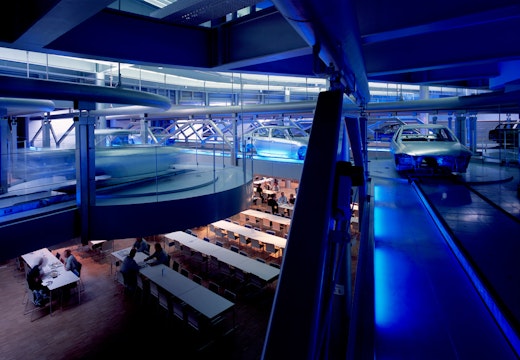Resetting the standard: why the average workplace falls short for hybrid workers
New data from Leesman reveals that experience, not presence, should be the key focus for employees in the future hybrid workplace
Workplace presence is the success metric many organisations are using today to understand how well their offices are performing. This has seen the rise of short-term incentives focused heavily on getting people into the office, regardless of the experience employees have when they are there. But is this the right metric to follow?
A new report by Leesman entitled ‘Power of Place: The different between average and outstanding’, highlights that hybrid working is here to stay in varying degrees, so to measure the workplace solely on employee presence is not an accurate portrayal of how well an office is performing. Instead, Leesman indicates that now is the right time to shift focus onto ensuring all employees have an outstanding experience when they do come to the office.
Leesman’s research draws on data from 515 workplaces and experiences of more than 24,000 employees collected between the latter half of 2021 to the first half of 2023. The study seeks to answer two critical questions: Why do you need an outstanding workplace in a hybrid working world? And how do you get from average to outstanding?
Average workplace is not enough
Hybrid working is cemented in how people work today. Leesman’s data finds that 86 per cent of employees are working across more than one location. However, the degree to which they have adopted hybrid work varies. For some it leans more towards primarily office working, while others sit at the opposite end of the spectrum opting to work mostly from alternative work locations such as their home. Whichever side employees choose, there is one consistent commonality: the office still plays an integral role in their work equation.
Despite incremental increases in workplace experience – measured using Leesman’s Index score – the data shows that the average knowledge worker is supported better in the average home than in the average office. This has been a consistent finding since Leesman started measuring hybrid working in 2022. So how can we bring offices up to par?
Surpassing average
If the average workplace is no longer enough to support today’s hybrid workforce, what elevates an office from average to exceptional? Leesman data finds that employees who spend an average of four to five days in the office per week have better workplace experiences than those who are in the office two to three days. This suggests that offices are not supporting the needs of hybrid workers in the same way they do for mostly office-based employees.
The question still stands: why is it important to have a great workplace experience if you already have a better work experience at home? The report identifies that when people are in the office it will likely lead to four key business benefits:
Pride and image: a sense of pride is crucial in maintaining a shared organisational identity, this is particularly important within a distributed workforce.
Privacy and concentration: as most people enjoy good acoustic privacy at home, they have a heightened expectation when they come into the office for spaces to focus and concentrate.
Community and working together: being physically together strengthens the social fabric of any organisation. The ability to work together and cultivate a sense of community is important for hybrid workers.
Enjoyable place to work: if the workplace experience is great, employees will get more enjoyment from being at the office. This is one of the biggest advantages workplaces can leverage over the comforts of home working.
Impactful design features
The study looked at a dataset of great workplaces that achieved a Leesman+ certification – a metric given to workplaces who score above 70 in the Leesman Index – and assessed the value the workplace delivered to the organisation and they ways they achieved that. Outstanding workplaces have exceptional design and layout, and are well-tailored to the roles and work of those using them.
The report identifies five critical design factors that can influence one or more of the four business benefits outlined in the research:
Atria and communal areas: getting the arrival experience right is linked to a sense of pride.
Quiet rooms for working alone: these spaces are paramount for acoustic privacy – an area of workplace that still needs much improvement.
Great hospitality: settings such as refreshment areas help maintain a sense of community among employees.
Plants and greenery: biophilia is particularly important for creating an enjoyable environment for employees to work in.
Variety of space: having a diverse spectrum of workspaces is statistically linked to all four business benefits: pride, privacy, community, and enjoyment at work.
The good news is that workplaces have become better. Longitudinal data from Leesman has tracked the scores of average workplaces as steadily increasing, which suggests progress is being made. Alongside this, employees have also been cultivating and improving their work-at-home set-up. The positive takeaway is that work environments across the hybrid spectrum are better accommodating workers today, and in tandem the benchmark for offices continues to rise.








